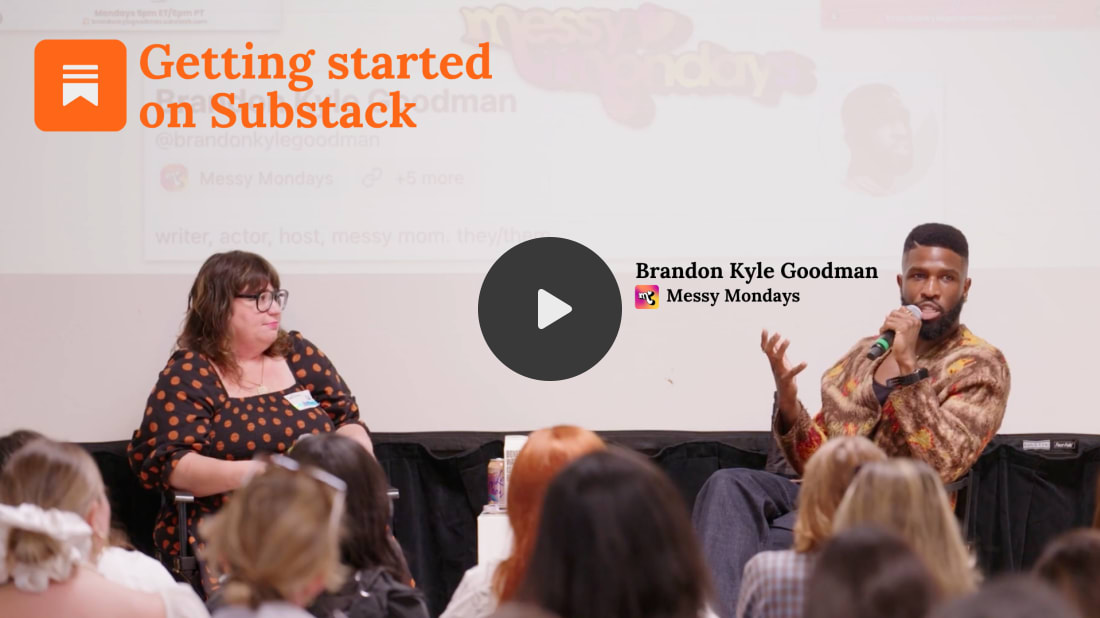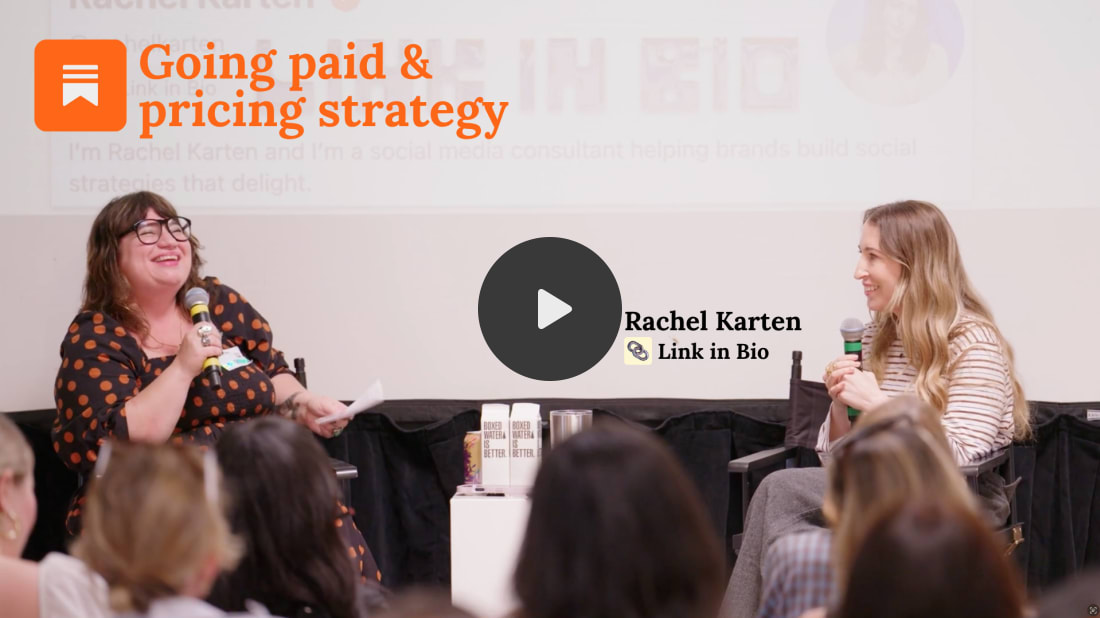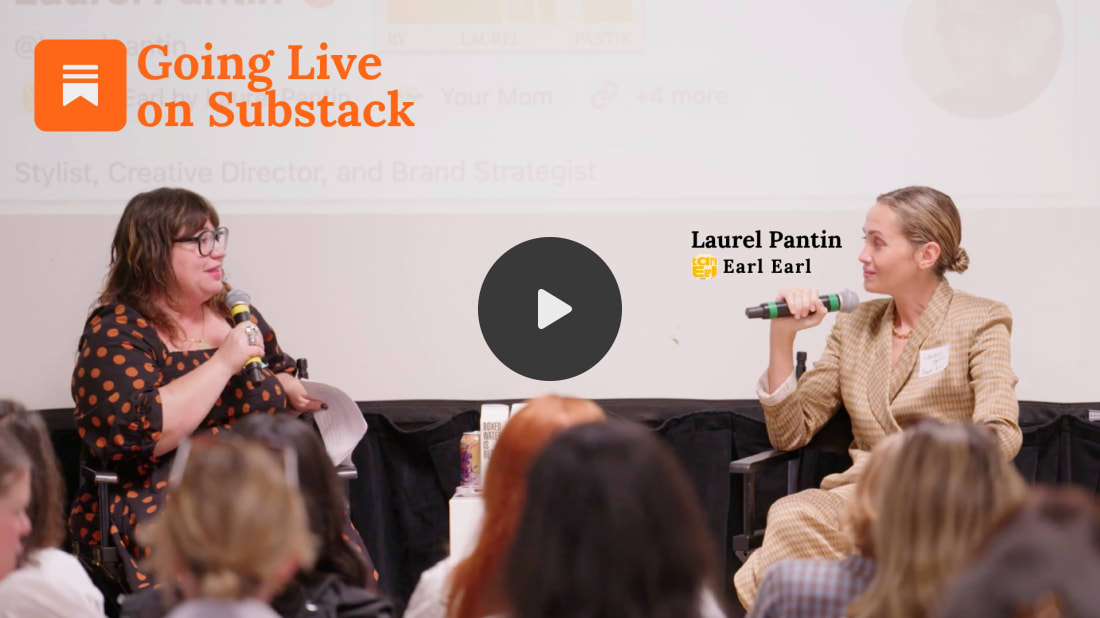|
Introducing Substack Study Hall: Advice from top creators on getting started, going paid, and more
Rachel Karten, Laurel Pantin, and Brandon Kyle Goodman joined us for our first Study Hall event in L.A.
Last week, we hosted our inaugural Substack Study Hall, a new education series for publishers to share strategies, swap ideas, and connect. Our first event brought Los Angeles writers and creators together for hotseat interviews and a Q&A with our product team.
The participants
Rachel Karten is a social media consultant who writes Link in Bio, a newsletter covering social media strategy and resources. Laurel Pantin is a stylist, creative director, and brand strategist and a former magazine editor and fashion director. She writes Earl Earl by Laurel Pantin, a lifestyle and fashion newsletter. Brandon Kyle Goodman is a writer, performer, and host who writes Messy Mondays, a newsletter with a focus on identity, sex, and relationships.
Each of them joined our head of lifestyle, Christina Loff, onstage to discuss getting started, going paid, making the most of live video, and more.
Getting started on Substack
Brandon said Substack doesn’t demand perfection to be successful or to build community: “I really like that it doesn’t have to be high-production. I think in some other spaces, things have to really look perfect. I’m here imperfectly, so I’m gonna see what works, throw some shit at the wall. If it doesn’t work, great. If it does, beautiful.”
Rachel recommends faking it till you make it: “Act like a writer before you’re a writer. Really hold yourself to standards and a consistent schedule.”
Laurel emphasized removing any friction that prevents consistent publishing: “Just start it. Don’t worry about a logo, don’t worry about everything being perfect. If you start feeling like ‘I can never do it because every time I write one, I have to do X, Y, and Z, all this legwork,’ then stop doing that legwork. Like, whatever it takes. If you want to do this, just make it easy for yourself to stay consistent.”
Key takeaway:
Consistency beats perfection every time: All three creators advise that showing up regularly with authentic content will build stronger communities than waiting to create something more polished.
Going paid & pricing strategy
Rachel recommends starting simple with paid offerings: “There’s a temptation when you go paid to feel like you need to offer a lot, when really, just one clear, valuable send can be enough for people. You can always add on more paid perks, but you can’t take them away. And so I think that’s something that I would think about when you’re going paid: what can I promise to offer that is so valuable and that I know I can deliver on?”
Brandon shares a trick he learned from Hunter Harris: “Sometimes she just paywalls, like, the last paragraph. You don’t have to paywall the whole thing, because at that point, people just want to support you. And I found that to actually be a better model in general.” His own editorial schedule makes good use of this strategy: “The livestreams on Monday nights are for everyone. And then there’s an additional post on Friday that has, like, a mini-podcast, and that is behind the paywall. But still in that post there’s a bunch of free shit. So it’s just a little extra.”
And Rachel reminded creators of a useful truism: know your audience. In Rachel’s case, she realized that many of her subscribers could expense her newsletter as professional development, and built her pricing strategy around this insight. “I knew because social managers would be subscribing that they could ask their boss for this to be an educational stipend. So I wrote a template that they could use to ask their boss if they could expense it. That has been huge. I see people in that doc to this day, years later.”
This led Rachel to price her newsletter at $8 a month instead of the usual $5, knowing some companies would cover the cost. She also created a $150 founding-member tier, titled “If your company’s paying for this, this tier is for you.”
Key takeaways:
Start simple with your paid offerings. You don’t have to offer subscribers multiple perks; focus on easy-to-understand offerings that you can consistently deliver.
Partial paywalls can work better than all-or-nothing approaches. Try paywalling just the last section of a post, or offering “a little extra” for paid subscribers.
Think strategically about who’s actually paying for your newsletter. Consider whether your content serves a professional need that companies might cover, and don’t be afraid to price higher if you’re providing business value that organizations will invest in.
Going Live
Brandon started going live once a week because it offered a low-production way to engage with his community consistently. “Can I be really honest? I was posting [on Substack] twice a week. I was writing on a TV show. I was writing my next book, writing a stage show . . . you know, the well was kind of dry. And so when Live video was introduced, it was like, ‘Oh, I can just talk to people. I don’t have to edit anything. Y’all make the clips for me. Love this.’”
Scheduling in advance and promoting across social media is a consistent part of his Live show workflow:
“I post on Instagram stories. I promote on the [Substack] app. I’ll also add the poster at the bottom of the newsletters, like: this is happening next week or in two weeks, and then I schedule my live video and I invite the [guest].”
He publishes his recordings immediately after going live, “so that if people are coming late, it’s already up.” Then he adds a write-up or context when he has more time, usually an hour or two later.
Laurel also described keeping Live video simple and not overthinking the process: “I love a styling video. I love to talk through why the proportion of this works with this, and how it can also work with a flip-flop or it can work with a heel. I love to talk through that reasoning. I don’t write a script for myself. I’m just standing in my living room talking.”
She treats her Live shows with guests like a coffee chat. “One of the things I miss about living in New York is [how] you would just bump into someone on your way to wor



